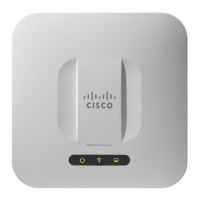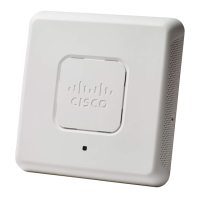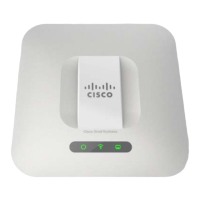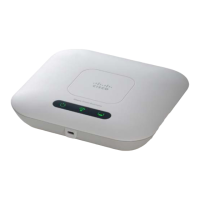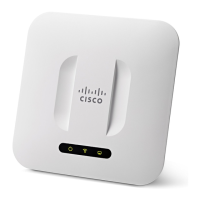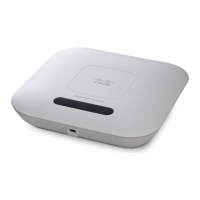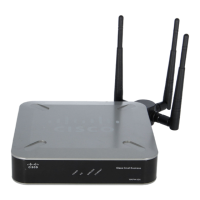When Auto is selected, the WAP device chooses the best rate for the associated clients. The range of valid values
is determined by the configured radio mode.
• Legacy Rate Sets — Rates are expressed in megabits per second.
The Supported Rate Sets indicate the rates that the WAP device supports. You can check multiple rates. The WAP
device automatically chooses the most efficient rate based on the factors such as error rates and the distance of client
stations from the WAP device.
The Basic Rate Sets indicate the rates that the WAP device advertises to the network for the purposes of setting up
communication with other access points and client stations on the network. It is generally more efficient to have a
WAP device broadcast a subset of its supported rate sets.
• Broadcast/Multicast Rate Limiting — Multicast and broadcast rate limiting can improve overall network
performance by limiting the number of packets transmitted across the network.
By default, this feature is disabled. Until you enable this feature, these fields are disabled:
• Rate Limit — The rate limit for multicast and broadcast traffic. The limit should be greater than 1, but less
than 50 packets per second. Any traffic that falls below this rate limit will always conform and be transmitted
to the appropriate destination. The default and maximum rate limit setting is 50 packets per second.
• Rate Limit Burst — An amount of traffic, measured in bytes, which is allowed to pass as a temporary burst
even if it is above the defined maximum rate. The default and maximum rate limit burst setting is 75 packets
per second.
• Spectrum Analysis Mode— The Spectrum Analysis Mode status can be one of the following:
• Dedicated Spectrum Analyzer—In dedicated mode, the radio is used for spectrum analysis for more than
10% of the time and the client connections may work but are not guaranteed.
• Hybrid Spectrum Analyzer—In hybrid mode, client connections are guaranteed but degradation is expected
throughout.
• 3+1 Spectrum Analysis— In 3+1 mode, clients connect to 3x3 chains, while spectrum analysis is done on 1x1
chain.
• Disabled—The default is Disabled
• VHT Features — The purpose of this feature is to enabled/disable Broadcom specific extensions in VHT for
Broadcom-to-Broadcom links. VHT feature enables support for 256QAM VHT rates not specified by the 802.11 ac
Draft. The rates are all VHT LDPC mode, MCS 9 Nss 1 20Mhz, MCS 9 Nss 2 20Mhz, MCS 6 Nss 3 80Mhz. The
VHT feature is supported for 802.11 ac PHY.
Step 6 Click Configure TSPEC and configure the following parameters:
• TSPEC Violation Interval — In the TSPEC Violation Interval field, enter the time interval in seconds for the WAP
device to report associated clients that do not adhere to mandatory admission control procedures. The reporting
occurs through the system log and SNMP traps. Enter a time from 0 to 900 seconds. The default is 300 seconds.
• TSPEC Mode — Regulates the overall TSPEC mode on the WAP device. By default, the TSPEC mode is off. The
options are:
• On — The WAP device handles TSPEC requests according to the TSPEC settings that you configure on the
Radio page.
• Off — The WAP device ignores TSPEC requests from client stations.
Cisco WAP581 Wireless-AC/N Dual Radio Access Point with 2.5GbE LAN Administration Guide
49
Wireless
Radio
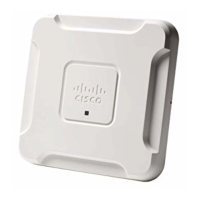
